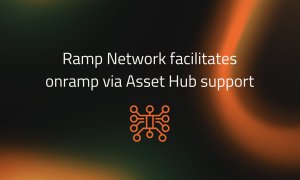Stablecoins May Help Everyday People See the Vision for the Crypto Economy – Guest Editorial
Many die-hard crypto enthusiasts want to see our entire economic system shaken to the core by crypto, fundamentally changing the commerce landscape and how we as a society interact with money. This is still a very difficult sell considering the steep learning curve and large fluctuations still found in many cryptocoins, says SwissRealCoin’s Brigitte Luginbuhl

By Brigitte Luginbühl, SwissRealCoin
Every change, especially a massive one, needs a compelling vision in order for it to succeed. This is especially true in the world of cryptocurrencies and blockchain. The problem is that the true believer’s dream for the crypto economy, while compelling, simply presents just too much risk for many individuals.
These fears have been stoked by the wild ride that Bitcoin’s price has endured over the last several months. At the end of December, Bitcoin was trading at over $15,000, rising to almost $20,000 at times. Just 40 days later, by February 9th, it had lost over half its value and sunk down to between $6,000 – $9,000 – with major price fluctuations occurring on an hour-to-hour basis.
Many die-hard crypto enthusiasts want to see our entire economic system shaken to the core by crypto, fundamentally changing the commerce landscape and how we as a society interact with money. This is still a very difficult sell considering the steep learning curve and large fluctuations still found in many cryptocoins. Outside of the core community of believes, most people have struggled to identify a vision for the crypto economy that they can relate to. For the average citizen, cryptocurrency feels dangerous and abstract, even though they are intrigued by it at the same time.
While the promise of a decentralized, crypto-driven economy has captivated the masses, the extreme volatility of cryptocurrencies has kept many away, and formalized rules for the game do not yet exist. There are concepts that are actively being explored, however, that look to address the public’s concern in order to foster better understanding and more participants in the crypto-economy.
Over the last year, the stablecoin concept has risen in popularity because it sends a message to ordinary people about the potential for the crypto economy that finally makes sense. Stablecoins, in short, are cryptocurrencies that are pegged to real-world assets, such as real estate, oil, fiat money like the USD, gold or something else.
Because a stablecoin is tied directly to an asset that exists in the physical world, the result in stronger price stability, in contrast to the extreme volatility of untethered cryptocurrencies like Bitcoin. Stablecoins are global and backed by real-world assets, but they’re not tied to a central bank. It combines much of what is great about blockchain and decentralized services while being familiar enough that “regular” people can understand the concept and feel safe experimenting with it.
Real estate is one area that can be used as a basis for a stablecoin, which is why it is one of the most frequently cited industries when it comes to discussions on the disruptive potential of the blockchain. Real estate is something very concrete, something that people can see and touch in the real world. Having a stable cryptocurrency tied to the value of such concrete objects is the next solid step towards a practical adaptation of an otherwise virtual and abstract currency.
Stablecoins are one of the hottest topics in cryptocurrencies right now, because they represent both a practical breakthrough, as well as an emotional bond with people. Even back in 2014, Ethereum co-founder Vitalik Buterin published a blog post about the search for a stable cryptocurrency. Almost four years later, people outside of the core community can now use the concept of the stablecoin to visualize how the crypto economy can fit into their daily lives and long-term financial plans.
One reason why most of us still don’t pay for things like coffee and train tickets in cryptocurrency is because this new form of commerce is still nascent. Many businesses and institutions have been scared away from adopting cryptocurrency and using it in their day-to-day lives, due to the perceived lack of stability. The emergence of stablecoins could change that, and people can start to benefit from the advantages of decentralization without the fear of compromising their financial security.
The subject matter and the content of this article are solely the views of the author. FinanceFeeds does not bear any legal responsibility for the content of this article and they do not reflect the viewpoint of FinanceFeeds or its editorial staff.









